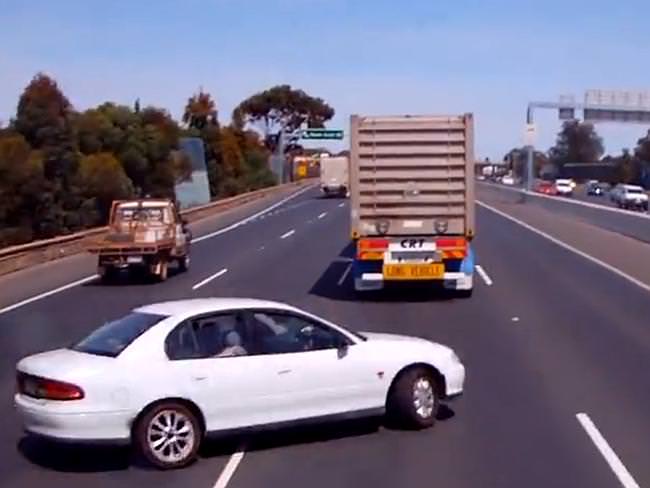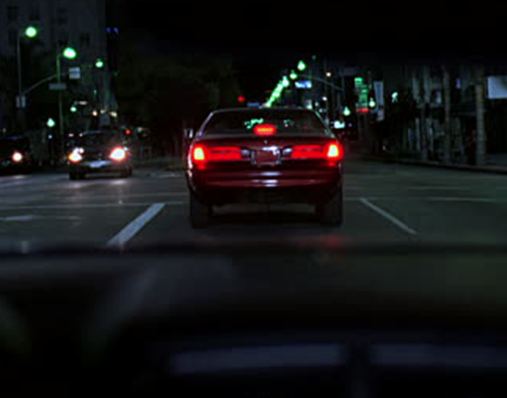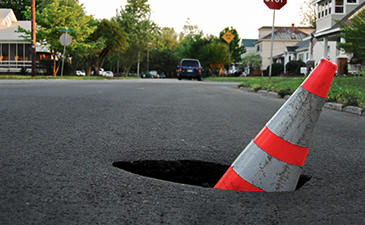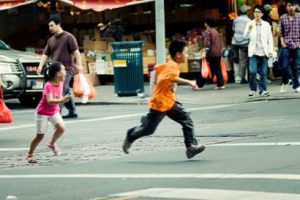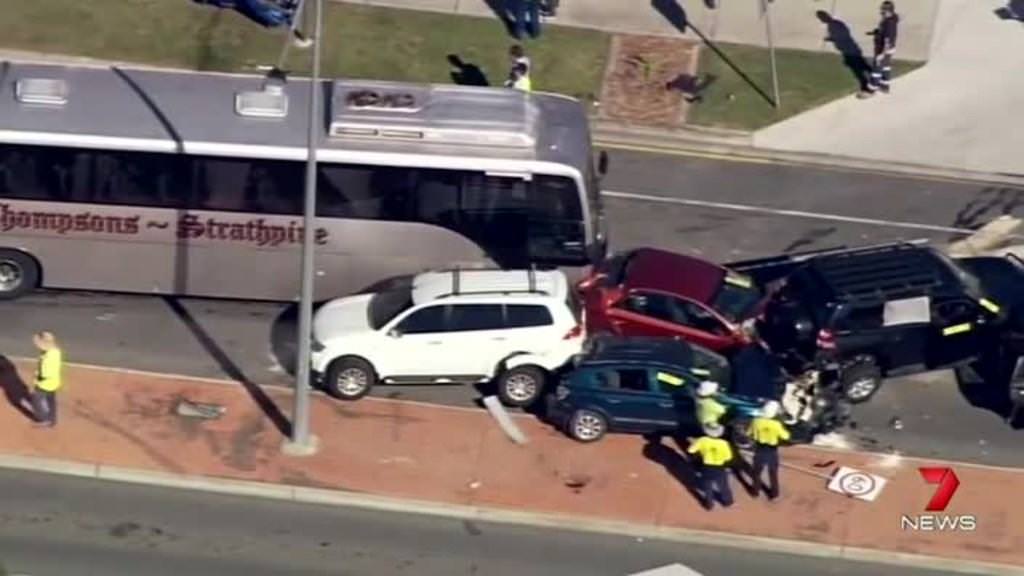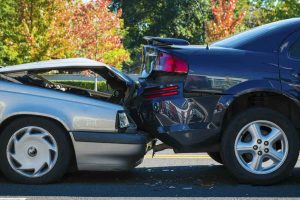
The definition of a rear-end collision car accident is a crash in which two vehicles are traveling in the same direction, on the same road, and collide (one vehicle’s front smashes into the second vehicle’s rear). According to the PennDOT’s 2020 Pennsylvania Crash Facts & Statistics, about 19% of car crashes on Pennsylvania roads in 2020 involved a rear-end collision or crash. In fact, there were 19,336 rear-end car crashes in Pennsylvania in 2020, with 82 rear-end collisions resulting in death or fatal injury. As a former auto insurance company lawyer who handled many car accidents in Philadelphia and New Jersey (who is now a Philadelphia rear-end accident lawyer), I am often asked at The Pearce Law Firm about rear-end collision accidents and who is at fault.
What is Rear-End Accident Law in Philadelphia?
Is The Driver Who Rear Ends The Front Car Always At Fault?
Usually, the automobile or vehicle that suffered the rear-end collision is not at fault. This is because the law places a duty upon drivers to remain at a safe and reasonable distance behind a car, truck, bus, or other automobile so as to be able to avoid a rear-end collision or accident of any kind. Under the Pennsylvania Financial Responsibility Act, the law states, “The driver of a motor vehicle shall not follow another vehicle more closely than is reasonable and prudent, having due regard for the speed of the vehicles and the traffic upon and the condition of the highway.” 75 Pa.C.S. § 3310(a). However, there are times listed below when the driver who rear-ended another car is not at fault or only partially at fault and may assert a claim to recover damages.
When Can The Front End Driver Be At Fault?
A driver who ends up in a rear-end collision with another car or truck should be able to prove that he was not at fault by showing that he had their vehicle under control, he closely observed the lead automobile, and he followed at a safe distance under the circumstances. If this is proved, many times it can be shown that the following automobile was acting reasonably safe, but the lead or front-end automobile negligently created a danger or hazard which could not reasonably be avoided due to the lead car suddenly stopping or swerving for no reason.
Sudden Or Unexpected Lane Changes…
The front or lead automobile may be at fault in a rear-end collision when it can be shown that a driver changed lanes directly into the path of the trailing automobile without warning. In one case involving a taxi cab accident, the court found that a taxi cab who suddenly and without signaling changed lanes directly into the path of a following car was totally at fault and negligent in the rear-end car accident. Robert v. Nelson and Yellow Checker Cab Company. There was testimony from a pedestrian witness that the following car did not have enough time to react to the taxi cab driver’s change of lanes into the path of the following automobile, especially given the wet roadway.
Unused or Faulty Brake Lights
Section 4303(b) of the Pennsylvania Vehicle Code requires that a light originally equipped on a motor vehicle must be in proper working order. This includes brake lights. Also, under the law, headlights must be used by the driver of any car or vehicle upon a highway between sunset and sunrise, and during any time when other drivers and motor vehicles on the highway are not clearly visible to the driver or operator for a distance of 1,000 feet ahead, due to insufficient light or unfavorable weather conditions, including rain, snow, sleet, hail, smoke or smog. 75 Pa.C.S. § 4302(a), While this may not totally shift all the fault to the driver who was rear-ended, it may shift some of the fault and possibly even allow a recovery for the following car or driver who could not see the forward car or motor vehicle in front until it was too late. Also, under the law, drivers of automobiles must use a car or truck’s flashing hazard lights whenever they are unable to maintain a speed consistent with the normal flow of traffic, or a speed less than any posted minimum speed limit, or a speed of at least 25 miles per hour when outside of a business or residential district, due to weather, grade or other similar factors. Also, the law requires the driver to use vehicle hazard lights whenever a car or truck is stopped or disabled on a highway, unless the vehicle is stopped in compliance with a traffic-control device or legally parked. So if the majority of fault for the accident was caused by the failure of the front car to use their lights properly, the rear-ending car may be able to recover or make a claim
Faulty & Defective Road Conditions… 3rd Party Liability
The rear-ending driver may not be able to avoid an accident because of the failure of road markings or warnings. In one case, Gregware v. City of New York, the rear-ending driver sued the City of New York and a road construction contractor because of lane closures and the need to reduce speed were not adequately marked, as there was inadequate warnings of lane closures or a need to slow down and there was no indication the driver was speeding when he approached the negligently marked construction zone. The Court agreed and upheld the over $6 million verdict for the car that rear-ended the other vehicle. In other cases, the accident may have been caused by large potholes, road debris, or a temporary road barrier that is negligently positioned. In these cases, the state, city, or county responsible for the road may be at fault in causing the accident.
Defective Brakes & Other Vehicle Malfunctions
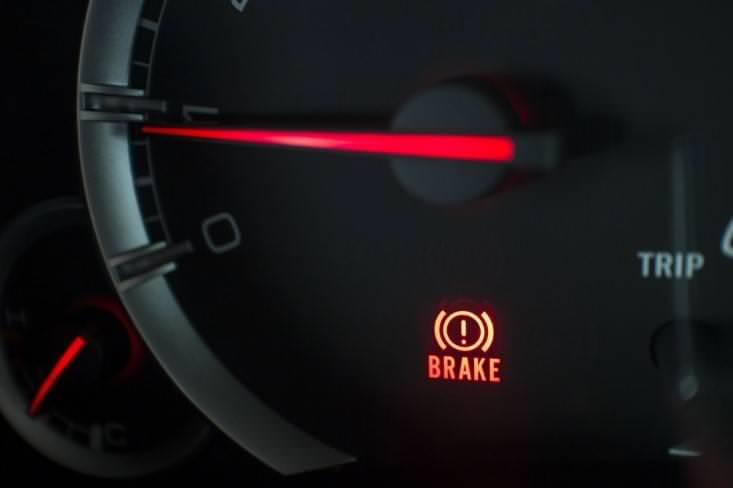
Poor Visibility
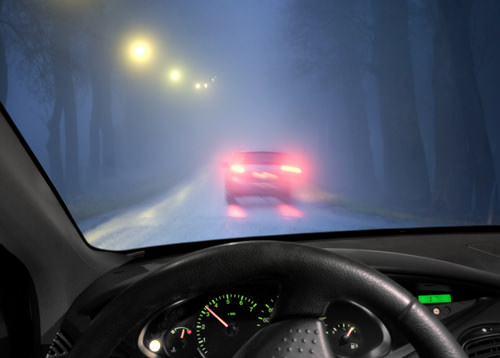
Poor visibility may be a factor in a car accident. For example, if an isolated fog bank or high beam headlights from an oncoming car temporarily blinded the driver, it could be argued that the back driver of the rear-end collision could not reasonably avoid the accident, especially if the car in front suddenly stopped or changed lanes as noted above. Also, whether or not the car in front had its lights on during bad weather (such as fog or rain) could have been the cause of the accident as discussed above.
Sudden Road Hazards or Animal Crossing
If a pedestrian steps in front of a car causing the car to swerve and hit the vehicle in another lane in a rear-end collision, this accident may not be the fault of the back driver. Another example is if a hazard such as something falling out of a truck or a deer or other animal suddenly darts out on the road and causes the back driver to swerve and hit another driver, the back driver may not be held to be negligent if their choice of action was reasonable under the circumstances. This defense is known as the “sudden emergency doctrine.” In order to prove a “sudden emergency,” the back driver must prove that there was a sudden emergency requiring immediate responsive action; the back driver did not create the “sudden emergency”; and the back driver’s response to the “sudden emergency” was reasonable under the circumstances. More importantly, the negligence of the third party in creating the dangerous condition, and not the back driver’s attempt to avoid hitting the hazard or pedestrian, may be determined under the law to be the “proximate cause” of the accident allowing a claim for the back driver involved in the rear-end crash.
Both Drivers At Fault
Under Pennsylvania law, if you are judged to be less than 50% at fault for causing the accident, you may still recover. So if the jury determined you were 40% at fault, your recovery would be reduced by 40%, but you would still recover. For example, a $50,000 verdict would be reduced to $30,000. This is what happened in a Colorado court case when the front driver whose car was rear-ended was considered partially at fault in causing the rear-end accident due to suddenly reducing her speed because of bighorn sheep in the roadway. It was determined that the front driver acted unreasonably by failing to pull over when confronted by the sheep. It was up to the jury to determine if the animals on the roadway could have been seen from hundreds of feet away and the driver could have safely pulled over to the side of the road instead of stopping in the middle of the road while they were crossing. Thus, although the back driver may have been partially at fault in failing to keep their car under control, the front driver may have been more at fault in stopping in the middle of a highway instead of pulling over.
Philadelphia Rear-End Collision Car Accident Lawyer (215) 557-8686
Looking for a rear-end accident lawyer in Philadelphia? WE CAN HELP. If you have been in a rear-end car collision and want some answers, we can help you. We provide a no-obligation, free consultation for those who have suffered an injury in a car accident or suffered any personal injury. The Pearce Law Firm has experienced car accident attorneys who have worked for insurance companies for years, so they have inside knowledge of how the insurance companies work and the “tricks of the trade.” Whether you need an accident attorney in Washington Township, NJ or a personal injury attorney in Cherry Hill, PA. We can help navigate you through all of the insurance issues and let you concentrate on getting better. From helping you understand your PA crash report to fighting for the compensation you deserve, we are here every step of the way. If we take your case, there is never a fee unless we recover money for you. Contact us today—Let us relieve your stress of handling this by yourself. Learn more on the Pain & Suffering Calculator.







